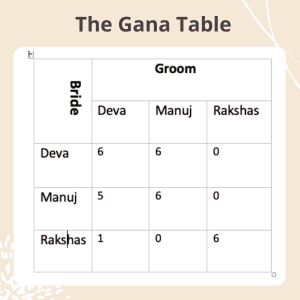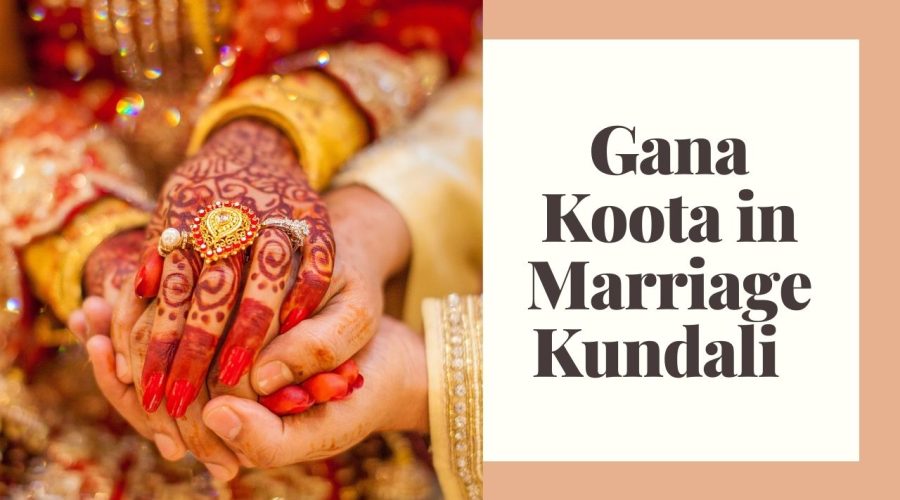Gana Koota: A Detailed Study into Gana Koota Marriage
In the Ashtakoota Milan system of Kundli Matching, Gana Koota is the sixth aspect. It aids in determining temperament compatibility between couples as well as the personality features of prospective spouses.
There are three Ganas in Vedic Astrology: Deva (which means Divine), Manuj/Manushya (which means Human), and Rakshas (which means Demon). The temperaments and natures of the nakshatras that belong to it are determined by these Ganas. Deva Gana people are known for being straightforward yet funny. They are deep intellectuals who are frequently involved in philanthropy. Manuj Gana members are thought to be compassionate and tender, and they tend to amass the most money. Individuals belonging to the Rakshas Gana, on the other hand, are thought to be irritable and headstrong, which often leads to confrontations with others around them.
These three Gana categories are applied to all 27 Nakshatras. Each Gana has nine Nakshatras, they are as follows:-
Deva Gana Aswini, Anuradha, Hasta, Mrigasira, Punarvasu, Pushyami, Revati, Sravana, and Swati
Manuj Gana: Ardra, Bharani, Poorvabhadra, Poorvaphalguni, Poorvashadha, Rohini, Uttarabhdra, Uttaraphalguni, and Uttarashadha
Rakshas Gana. Aslesha, Chitra, Dhanista, Krittika, Magha, Moola, Jyeshta, Satabhisha, and Visakha 
Key Observations from Gana Table
- Gana Koota has a maximum score of six points. With the exception of the Deva and Manuj Gana combination, the couple receives 6 points if both spouses belong to the same Gana.
- If the boy is from Deva Gana and the girl is from Manuj Gana, the couple receives 5 points.
- With the exception of when the female belongs to Rakshas Gana and the boy belongs to Manuj Gana, 0 points are awarded when the boy belongs to Rakshas Gana and the girl belongs to either Deva or Manuj Gana.
- When both parties belong to the same Gana, the match is deemed most suitable and auspicious in Kundli Matching, as this indicates excellent compatibility, and when the couple scores 0 points, the match is considered least suitable and inauspicious. Gana Dosha occurs when a couple receives no points.
Because of Gana Dosha, problems and conflicts emerge in a relationship when both parties find it difficult to adjust to each other’s tempers and nature, or when they constantly dispute. As a result, partners seek intimacy outside of their marriage, which can lead to extramarital affairs.
If the lords of the signs of the partners to be married are mutual friends, or if both partners have the same lord of the sign, or even if both partners have the same navamsa, Gana Dosha is not regarded.
Gana Koota is significant in Kundli Matching because it aids in determining whether the characteristics of the partners are compatible. A high Gana Koota score suggests a good match, which will result in fewer disputes and fights between the partners, whereas a low score may lead to unneeded fights.

